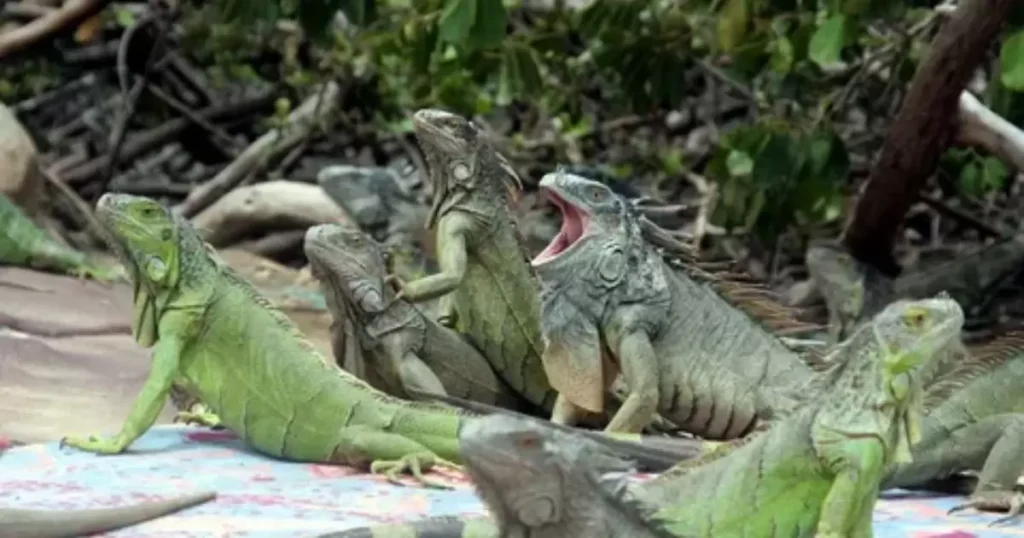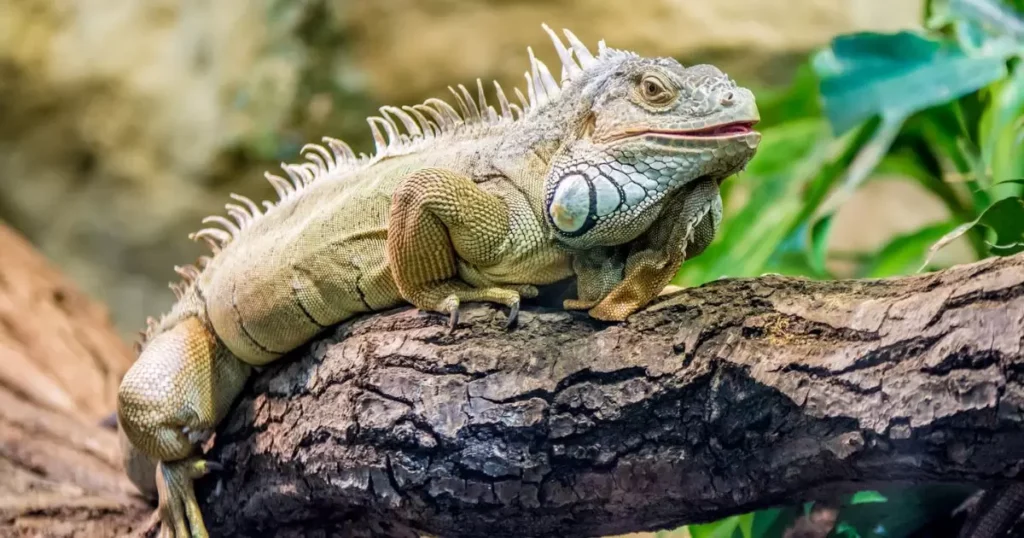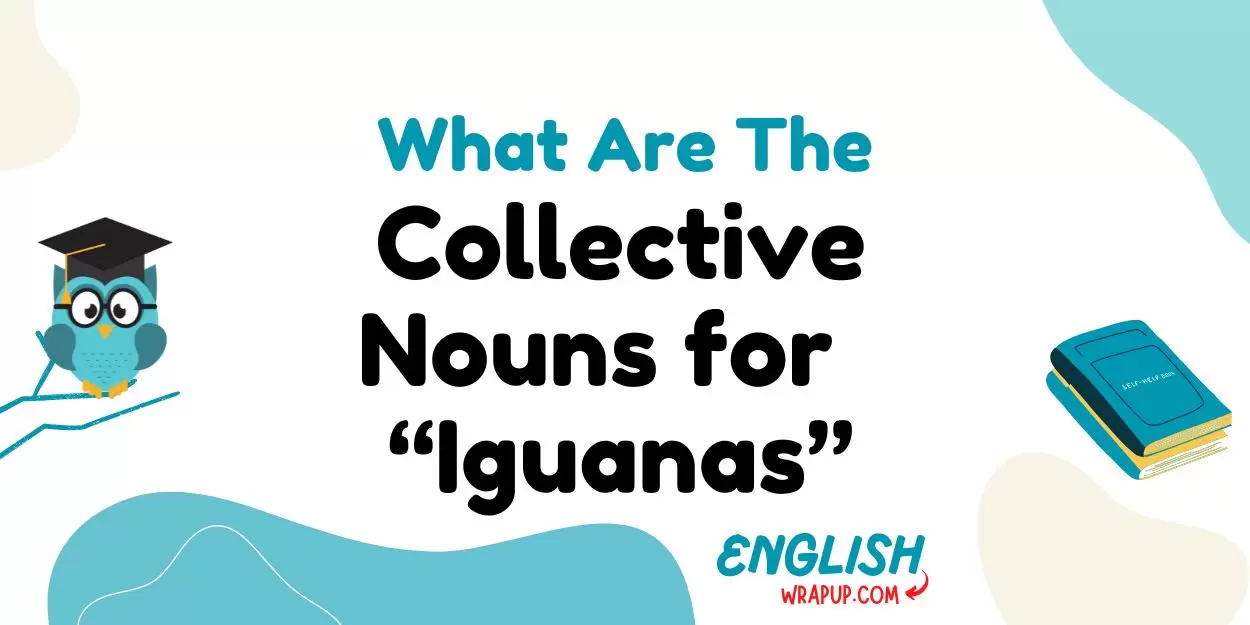Iguanas are fascinating reptiles known for their distinctive appearance and behavior. While they are often seen basking in the sun or foraging for food individually, iguanas can also congregate in groups, particularly during mating season or when sharing a favored basking spot.
In this article, we explore the collective nouns used to describe groups of iguanas, shedding light on their social dynamics and habits.
What Are Collective Nouns?
Collective nouns are words used to describe a group of individuals or things as a single entity. These nouns can refer to groups of people, animals, objects, and more. For example, a group of lions is called a “pride,” while a group of fish is known as a “school.”
Collective nouns offer a unique and descriptive way to represent groups, enriching our language with specific terms that capture the essence of collective entities.
Best Collective Nouns For Iguanas
- A mess of iguanas
- A lounge of iguanas
- A congregation of iguanas
- A nest of iguanas
- A band of iguanas
- A colony of iguanas
- A chain of iguanas
- A bed of iguanas
- A bask of iguanas
- A parade of iguanas
Collective Nouns List
A Mess of Iguanas
A mess of iguanas suggests a group of these reptiles gathering together in a disorderly or chaotic manner.
Example Scenario
In the overgrown jungle, a mess of iguanas scrambled over fallen branches, their colorful scales shimmering in the dappled sunlight.

A Lounge of Iguanas
A lounge of iguanas implies a group of these animals relaxing or sunbathing together in a leisurely manner.
Example Scenario
On the rocky outcrop, a lounge of iguanas sprawled out, their bodies soaking up the warmth of the sun as they soaked in the tranquility of their surroundings.
A Congregation of Iguanas
A congregation of iguanas refers to a gathering of these reptiles, perhaps for mating, feeding, or socializing.
Example Scenario
At the water’s edge, a congregation of iguanas assembled, their sharp eyes scanning the surroundings for signs of danger as they prepared to drink.
A Nest of Iguanas
A nest of iguanas suggests a group of these animals occupying a shared shelter or resting place.
Example Scenario
In the hollow tree trunk, a nest of iguanas huddled together, seeking refuge from the harsh elements of the rainy season.
A Band of Iguanas
A band of iguanas implies a cohesive group of these reptiles moving together, perhaps in search of food or territory.
Example Scenario
Through the dense undergrowth, a band of iguanas advanced, their synchronized movements indicating a shared purpose as they foraged for edible plants.
A Colony of Iguanas
A colony of iguanas describes a larger group of these animals inhabiting a particular area, such as a rocky shoreline or coastal cliffs.
Example Scenario
Along the rocky coastline, a colony of iguanas thrived, their bodies blending with the rugged terrain as they navigated the narrow ledges.
What Are The Collective Nouns for “Hamsters”
A Chain of Iguanas
A chain of iguanas suggests a linear arrangement of these animals, perhaps seen when crossing open terrain or climbing.
Example Scenario
Across the sandy beach, a chain of iguanas marched, their tails trailing behind them like links in a living chain.
A Bed of Iguanas
A bed of iguanas implies a group of these reptiles resting or sleeping together in a comfortable location.
Example Scenario
Underneath the shady palm trees, a bed of iguanas dozed peacefully, their rhythmic breathing a testament to their contentment.
A Bask of Iguanas
A bask of iguanas refers to a group of these animals sunning themselves to regulate their body temperature.
Example Scenario
On the sun-soaked rocks, a bask of iguanas sprawled out, their bodies absorbing the heat of the day as they enjoyed a moment of relaxation.

A Parade of Iguanas
A parade of iguanas suggests a group of these reptiles moving together in a conspicuous or showy manner.
Example Scenario
Along the forest trail, a parade of iguanas strutted, their vibrant colors and graceful movements drawing the admiration of onlookers.
Interesting Facts About Iguanas
- Iguanas are herbivorous reptiles native to Central and South America, as well as some Caribbean islands.
- There are several species of iguanas, including the green iguana, spiny-tailed iguana, and marine iguana.
- These reptiles are known for their distinctive features, including elongated bodies, dewlaps (throat flaps), and spiny crests along their backs.
- Iguanas are excellent climbers and swimmers, allowing them to inhabit a variety of habitats, from rainforests to coastal mangroves.
- Many iguana species are threatened by habitat loss, hunting, and the exotic pet trade, highlighting the need for conservation efforts to protect these iconic reptiles.
Conclusion
Collective nouns provide a colorful and descriptive way to depict groups of iguanas, capturing the essence of their behavior and interactions. From a lounge of iguanas basking in the sun to a congregation of iguanas gathering at the water’s edge, these terms evoke images of these fascinating reptiles in their natural habitat.
Understanding and using collective nouns not only enriches our language but also deepens our appreciation for the diversity and complexity of the animal kingdom. Through these terms, we gain insight into the behaviors and dynamics of groups of iguanas, highlighting the significance of collective nouns in describing groups of objects.

I’m Noah Wilson, the test-prep pro at “English WRAP Up.” I’ve been helping students navigate the challenges of TOEFL, IELTS, BULATS, FCE, CAE, and PTEG, making the learning process a whole lot of fun. Over at English WRAP Up, we’re here to make your test prep incredible. Let’s wrap up your English exams with confidence and skill together!



